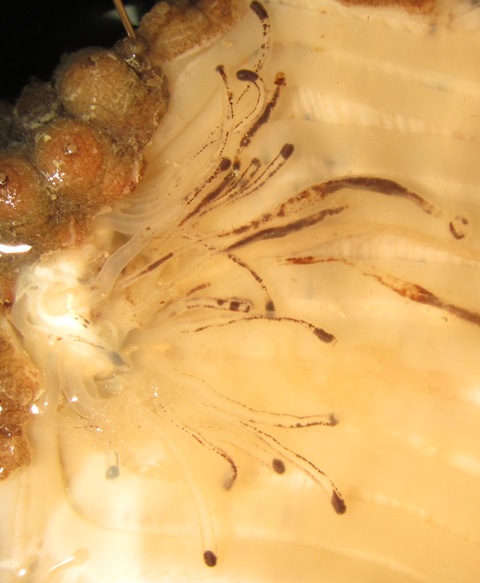External Morphology
H. impatiens has bilateral symmetry. The oral surface and five ambulacra expand aborally along the elongated polar axis from mouth to anus. Three of these ambulacra are located on the ventral side of the cucumber whereas the two remaining rows on the dorsal side have under-developed or vestigial tube feet (Ruppert, et al 2004).
The animals’ means of locomotion is via tube feet or commonly known as podia. Each tube foot is made up of a cylindrical shaft complete with a sucker at the tip. The water vascular system is what controls the locomotion, once the hydraulic pressure extends the tube foot the animal can begin to move. Tube feet are arranged variably along the ambulacral rows (Gmelin 1791).
H. impatiens have 18 peltate shield shaped tentacles, which is exclusive to the order Aspidochirotida (Figure 9). As the animal feeds it pushes the tentacles onto the substratum and particles adhere to the mucus. The tentacles are then retracted and food is removed from them so that the process can begin again.

Figure 9: 18 peltate shield shaped tentacles of Holothuria impatiens
Echinoderms characteristically have an interior skeleton made up of plates of calcium carbonate, however in H. impatiens, these have been reduced to microscopic ossicles fixed underneath the skin (Kerr 2003).
This species has a leathery body with thin cuticles and a non-ciliated epidermis. Through the use of mutable connective tissue in the dermis, the animal is able to change its body form from hard to soft (Ruppert, et al 2004).

Figure 10: Close up of Holothuria impatiens leathery skin |